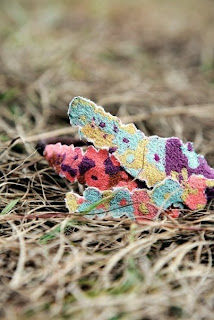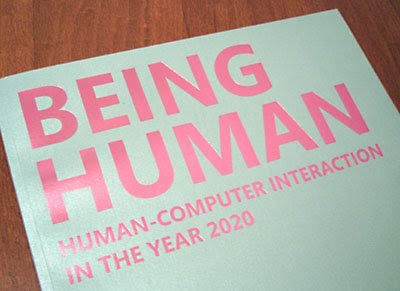
Tuesday 10
th Feburary 2009, spelled the day of Josh
Liandu's awakening to the importance of sustainability in design, and in the shaping of our future. The discussion took place over a lunchtime, and was heavily attended by students and tutors alike, over a wide spread of the design disciplines. I'm not going to lie, walking into a room full of the likes of Mike Press,
Seaton Baxter and Jonathan Baldwin, is fairly daunting. Especially when you know that they're now not lecturing you, but are there on a level par to listen to and comment on YOUR views.
Orchestrating this all was young Graphic Design student,
Struan Pendriech, currently a 2
nd year at our very own Duncan of
Jordanstone. It was some-what inspiring to see someone my age so passionate about the issues surrounding sustainability - but
I'll spiel more about that later.
Basically, the discussion was a student led workshop on the subject of embedding sustainability in the curriculum. Advertised as a real opportunity for students and staff to listen and talk with other students in a cross disciplinary setting, about how our briefs, workshops, teaching and such, might be improved or even radicalized, in order to meet student expectations and ethical issues.
Here's what I took from it...
The main issue in connection with sustainability, being addressed, was 'How do we make our students more receptive to sustainability?'.
Struan began by bringing a figure, that Jonathan Baldwin had pointed out to him from a section in The Higher Education Academy's 'Networks magazine'. The figure [shown above] points out the pro-sustainability influences on a student, whilst they're at college or university. I found the diagram useful as it began to provoke thoughts in my mind that I hadn't tackled before, it also opened up the floor of the discussion and got the ball rolling.
The briefs were one of the first factors that were brought to the table. Issues raised were that we've successfully managed to get sustainability and force it into a box that we

can neatly tag on the end of a brief, but that we need to make sustainability the main issue that the briefs are based on. People talked about maybe looking into the materials we get to use as students, whilst others complained about the time scales we are given. I agreed with what was said about looking at making the briefs about sustainability rather than just trying to incorporate it into them. This was also touched on a little later on in the workshop, by
Seaton Baxter, an honorary Professor in Duncan of
Jordanstone's School of Design. He said that because of our changing world, the new briefs for our projects should be coming from the "real world", and should be integral to how we as students are taught. All these points were good, but they didn't REALLY answer the question for me. He also said that the magnitude of the problem is great, and that it's how we really UNDERSTAND the problem that's going to start making a difference.
Someone who I was surprised to see at this discussion, was Grant Payne, a 1st year Product Design student at the university. He was sat on the main table, and had a few good things to say on the issue. One of those being that we need to, "Set a date for change.", I believe is how he worded it - reminding me a lot of something President Obama would have said on his historical road to the White House! This statement was well received and led to many of the points raised. Good job kid.
I think it was Jonathan Baldwin who raised the point which dwells in the back of all designers minds, that primarily, a lot of the problems with the environment today have been brought about by POOR design and a shear lack of forward planning from designers. This was a good point, as it reminds us that we can look back at the mistakes that have been made, and make sure that we learn from them and aim to design for a more sustainable world.
Mike Press, the university's 'Chair of Design Policy', was also attending the discussion and acted as the
physical representation of college management, and this meant he had to field many of the somewhat "awkward" questions directed at the board. N

evertheless, he shared many useful insights, and put across loads of good points. One of the questions put to him, was querying the aims of the University in the re-design of Duncan of
Jordanstone College, to make it more ecologically sound. His reply referred to the recently erected Queen Mother Building on the Dundee University campus, and it's good example of ecological architecture.
He spoke on sustainability not just being an attitude change, but also being a 'lifestyle' change, and believed that many designers' ethics would be continually challenged over the course of their careers. An example of this that I have encountered, was when Visiting Professor at Dundee University, Colin Burns, came to speak to our 2
nd year Product Design class last semester. He shared with us his run in with a major superstore retailer [that will remain unnamed], that he said he'd never work for, then was offered a project by them that paid extremely well, and was put into this complex situation.
A couple of other key things he said were that when you need something to change, and just looking at ideas in general, things from the top down never work. I felt this was an interesting statement, obviously fairly generalised, but an interesting statement none the less. And also, he really believed that the key engine of radical and revolutionary change had arrived, and that we should strike while the iron is hot.
Because of the open floor, this discussion allowed for many interesting and radical views. A young foreign student, who I thinks name was Gonzalez, brought one of these such views. He said that sustainability was about how we lived today, and that it was based on what our ethics were. this was all based around his 'Concept of Human Conversation', and it's importance to everything. I liked how he said that how we're going to live tomorrow, all revolves around how we live today. working together, we should aim to say that EVERYTHING we design WILL be sustainable and therefore, inevitably take full responsibility for our own actions if they're not.
I, Josh
Liandu, am speaking as "the Converted". I began my University career a year and a half ago with the notion that recycling and sustainability, and such like issues, were "not cool" and, at most, lurking in the background of design today. Over the past 18 months, I have soaked up a fresh set of ethics and views from my projects, lectures and chats with my tutors, etc. Sometimes it's felt like the media are creating a panic or a "media-frenzy", and it's that factor that has put me off worrying about sustainability in the past. I believe that
sustainability is not a matter of us trying to
preserve the earth, as it's been around for billions of years and will easily be able to rectify itself. I feel it's a lot more selfish than that, and that it's all about looking after ourselves, as humans, and preserving our descendants. And as far as the issue of sustainability in the
curriculum, I agree that the briefs need to be based ON designing for sustainability, and not just trying to work it in at the end, even making it a pass
parameter in every brief..
I'm not sure. What do YOU think?
This workshop or discussion, or whatever you want to call it, was a huge learning experience for me. It allowed me to absorb heaps useful information and lots of views [some I agreed with and some I didn't], but most importantly, it raised my awareness surrounding the issue of sustainability in design an in the world we live in today. And this I feel deemed this event a success.
The next meeting was arranged for 27
th March 2009, and is aimed to bring together not only the people who met up this week, but also a whole load more people, and hopefully,
Unbox's involvement will help to bring this issue to the forefront. Also look out for the 'Sustainability Forum', that Jackie Malcolm heads up. More information on - https://secure.dundee.ac.uk/design/TLforum.php.

Hit us back with your views and tell me what you think should be done about this issue of making our students more receptive to sustainability, and how it should come about.
Would love to see you all in the Reception Room [above the library] on the 27
th March. Things will kick off around 12.30.
Cheeers.
*_*
































